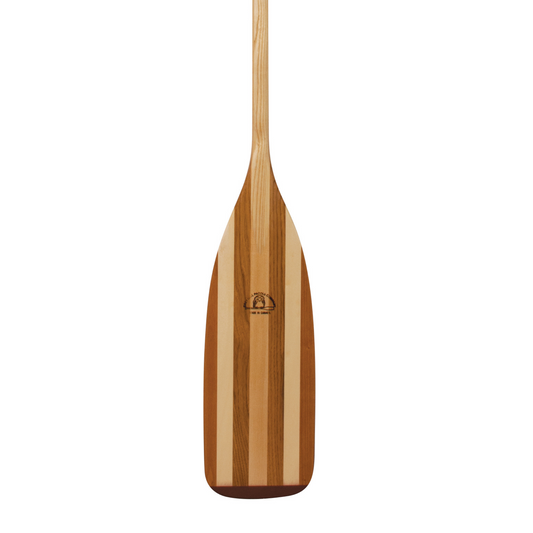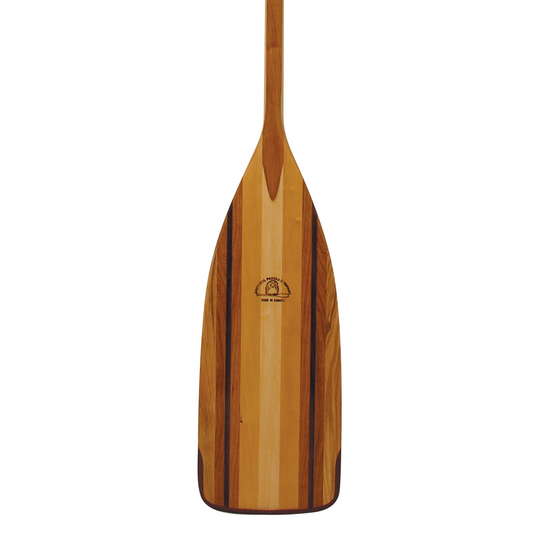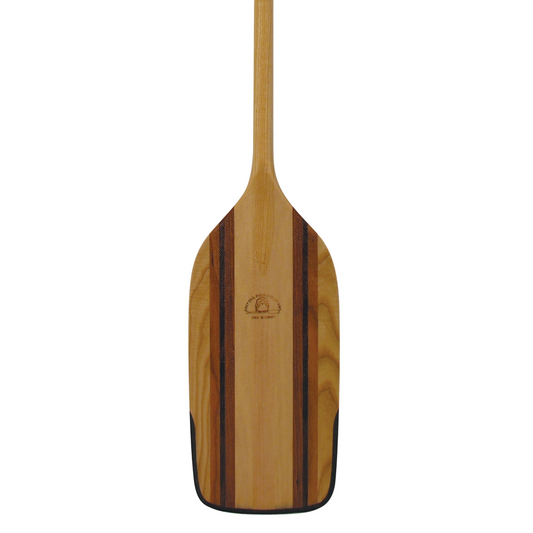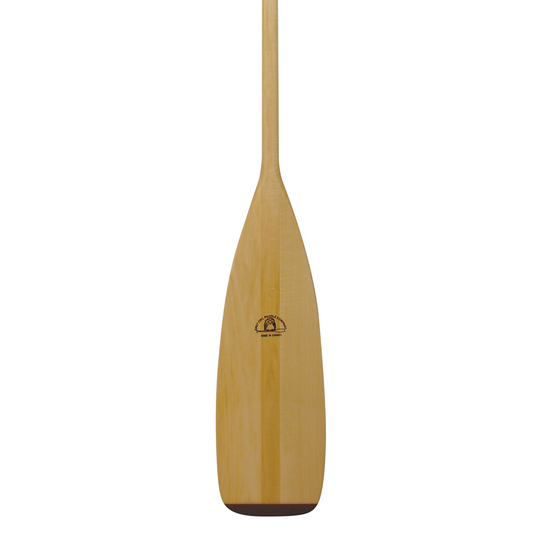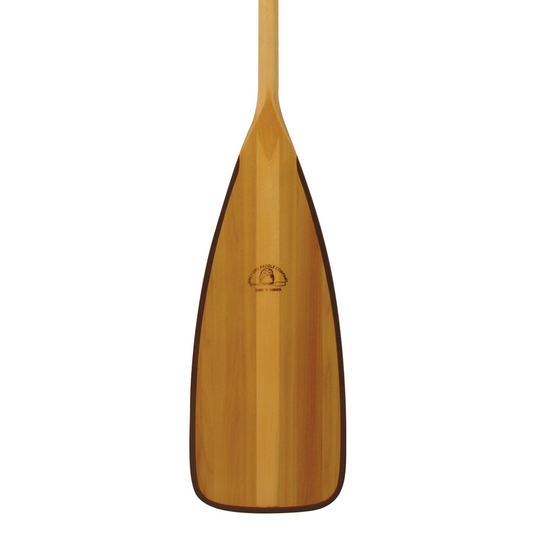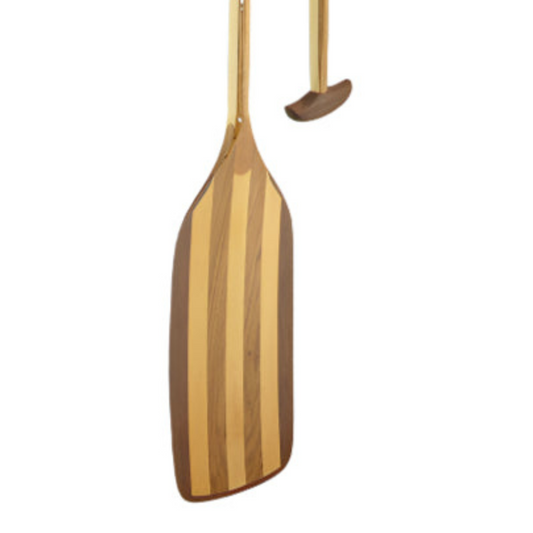Collection: Recreational Paddles
Recreational Paddles
Our recreational line is characterized by shorter, wider blades than the traditional paddles, along with laminated blades and shafts often of contrasting woods for aesthetic and practical reasons. Laminated shafts can be strong and light using hardy and heavier woods on the face and sandwiching lighter, weaker ones in the core. The same may be said of the blade – using strong woods on the thinner edge and blade center, with light-weight woods near the shaft where the wood is thickest. Another advantage of laminating is the strength gained by the numerous grain patterns of the various wood strips.
Recreational paddles tend to have a stiffer flex. On the one hand, this feature makes the paddle more efficient by limiting the loss of power transferred from the paddle stroke. However, this makes the paddle harder on the joints and more tiring for a weaker paddler.
These models offer advantages over their traditional cousins: they are easier to use in the shallows, particularly in depths of 18” or less, better in moving water and generally less expensive than traditional paddles.
Sizing Your Recreational Paddle
Regardless of the model of straight or bent shaft paddle you have selected, the overall length should be determined by the shaft length from the top of the grip to the throat of the paddle.
The following formula applies: the shaft length should equal the distance from one's shoulder to the water line of the canoe. This will allow you to paddle below your eyes with your upper hand while keeping your lower hand close to your throat.
To determine the approximate length, sit erect on a flat, hard chair or the floor and measure the distance from the surface to your chin. Add 6” for the approximate distance from the canoe seat to the waterline. Thus, a person whose chin to chair measurement is 26” would add 6” to arrive at a 32” shaft length. Looking at the specifications of our various models you would find that you would probably use a 50” Touring Bent Shaft, a 54” Voyageur or a 56” Chieftain. A one or two-inch variation would not have much effect in usage, so try for the closest shaft length for the model chosen. Remember to consider that canoe seat heights vary, as might a ‘comfort range’ you might feel more suited to.
The only exception to this rule would be our Hammerhead paddle. A completely different technique is used for white water canoeing and you may add approximately 12” to your chin to chair length.
-
Grey Owl Voyageur Canoe Paddle – Laminated Wood, Cambered Blade, All-Around Tripping, 52″–66″
Regular price $143.00 CADRegular priceUnit price / per -
Grey Owl Sugar Island Touring Canoe Paddle – Cambered 22″ Blade, Black Cherry & Walnut, 52–66
Regular price $155.00 CADRegular priceUnit price / per -
Grey Owl Pathfinder Canoe Paddle – Cambered Blade, Walnut/Basswood, Cobra Grip
Regular price $143.00 CADRegular priceUnit price / per -
Hammerhead Whitewater Canoe Paddle – Heavy-Duty, 54″–64″
Regular price From $174.00 CADRegular priceUnit price / per -
Grey Owl Scout Canoe Paddle – Entry-Level Basswood, Cambered Blade, Sizes 51″–63″
Regular price $84.00 CADRegular priceUnit price / per -
Fleetwood Solo Freestyle Paddle – Ultra-Light Cedar, 52″–62″
Regular price $258.00 CADRegular priceUnit price / per -
C-1 Whitewater Paddle – Cambered Spoon Blade, Mushroom Grip, 54″–64″
Regular price From $251.00 CADRegular priceUnit price / per

